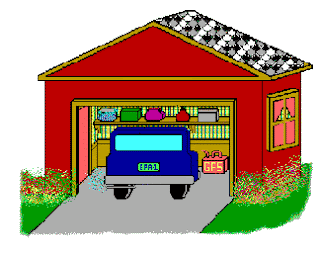How To Create A Fantastic Picture Book
by Emma Blackburn
Emma Blackburn, editorial director for picture books at
Bloomsbury Publishing, gives her top tips for getting started on your picture
books.
READ, READ, READ
Before you start your own picture book, take a look at some of the wonderful
picture books that are available at your local library, your school and your
bookstore.
This will help you to get a feel for the kind of stories
that work and will open your eyes to a fabulous array of illustration styles
and design. Of course, don’t copy but use these as inspiration.
Tip: Read lots of picture books for inspiration.
GETTING STARTED
Picture books can be about all sorts of things. Let your
imagination run wild and write down all your thoughts and ideas on a piece of
paper. Don't be afraid to write down EVERYTHING - you don't want to forget a
brilliant idea!
Think about different characters and scenarios. Who will be
your central character? Where will your story be set? What will happen? What
about the ending?
Leave some time to let the ideas settle. Come back to them
and see which idea you think is the strongest and worth developing.
Tip: Brainstorming at the initial stages is
really important.
DEVELOPING CHARACTER
There are lots of different picture book characters: aliens,
monsters, dinosaurs, children, safari animals, domestic animals.
Choose your strongest and most appealing character and think
about how he/she might act. Is he/she loud/shy? Is he/she funny/scary? What is
his/her world like? How about friends? What sort of character would your main
character be friends with?
It is important that your character will appeal to readers
so make sure that your character is developed enough to keep readers hooked and
wanting to read more.
Your character's name is important. Think about a name that
says something about your character's personality or character traits, or
perhaps gives an indication of the story. For example, DINO-BABY by Mark
Sperring and Sam Lloyd tells the story of a little dinosaur baby and his
family.
If your character is strong enough, then he/she could
perhaps be developed into a series of stories. Think about other adventures for
the character outside the one you are working on.
Tip: Think about a strong name and a series of
adventures for your character.
DEVELOPING YOUR STORY
Make sure that your storyline has plenty to keep your reader
interested. It's important that each page of your book leaves your reader
wanting to turn over the next page.
Your story doesn't have to be a complicated one but it must
have interesting things happening on each page (both in terms of the text and
the illustrations).
In
TIME FOR BED, FRED by Yasmeen Ismail, the story follows a
mischievous dog called Fred and his efforts to avoid bedtime. Each spread of
the book has something funny happening to keep the reader hooked until,
finally, Fred settles into bed at last.
Tip: Think about page-turning scenarios for your book.
THE ENDING
A satisfying ending is a must. Make sure you know from the
outset where your story is heading. See if you can think of an unexpected twist
at the end of your book. A great example of an unexpected twist is contained in
WHEN TOM MET TALLULAH by Rosie Reeve.
COVERS AND TITLES
The cover image for your book should be striking and
immediate. This is the first thing that your reader will see when they pick the
book up.
Think about a strong image that says something about what
the book is about and also one that is focused and not too busy. Generally a
single image works better than a scene.
Titles should also be snappy and give a feel for the story
inside.
For example, SHH! DON’T WAKE THE ROYAL BABY by Martha
Mumford and Ada Grey is all about the arrival of a new baby at the Royal Palace
and the lengths that the Royal Family will go to make sure that the baby sleeps
peacefully. The cover image of the Queen parachuting is funny, striking and
immediate and reflects the humour of the story inside.
Tip: Keep titles and cover images snappy and striking.
DESIGN AND ILLUSTRATIONS
The illustrations and design of your book should reflect the
feel of, and work closely with, your story.
The text, illustrations and design should work in harmony to
create an enjoyable reading experience.
Be creative and keep your reader interested by using a
clever mix of single page images, double page spreads and vignettes.
Use an interesting font but always bear in mind that the
text must not be tricky to read. Lauren Child's picture books are a great
example of interesting, creative design working in harmony with a strong text
and an imaginative illustration style.
Tip: Make sure that the design and illustrations
work with the text to create an enjoyable reading experience.
THE TECHNICAL BIT
Most picture books are 32 pages in length. Ideally the story
should run over 12-13 spreads.
Keep your story snappy and interesting – try not to write
more than 700-800 words.
Make sure that you divide your spreads sensibly to allow for
a satisfying beginning, middle and end. It's no good having a fabulous build-up
to your story, only to discover that you only have four spreads left for the
main story and the ending.
Tip: Pacing is important
KNOW YOUR AUDIENCE
Show your book to as many parents, teachers and children as
possible and get their feedback.
Tip: Feedback from readers is enormously
helpful.
MOST IMPORTANTLY!
Make sure you enjoy it. Creating your own picture book is
challenging but rewarding!
Tip: Have fun!
































